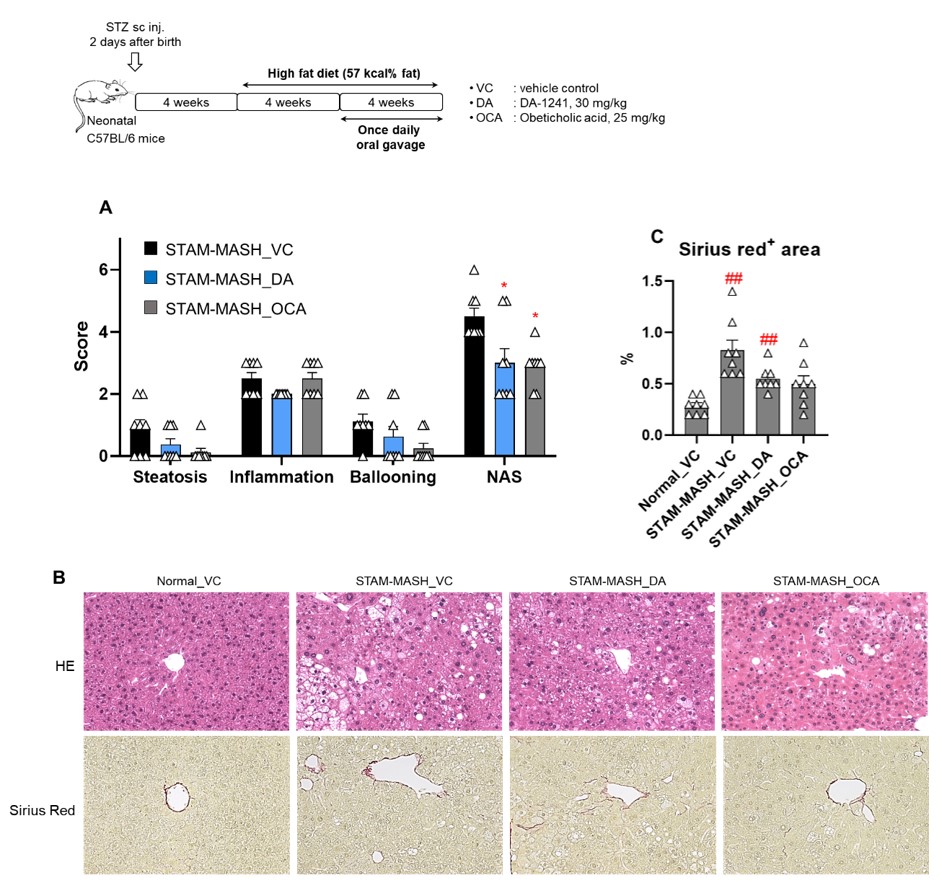Exploring New Therapeutic Potential of GPCRs: A Breakthrough in GPR119-Targeted NASH/MASH Treatment
Today, we are excited to share a recent study highlighting a promising approach to targeting G protein-coupled receptors (GPCRs) in NASH/MASH treatment.
This study addresses a long-standing challenge in the development of NASH/MASH therapeutics using GPCR-targeting compounds.
GPR119 activation has been shown to promote GLP-1 secretion and glucose-responsive insulin secretion, making it a compelling target for NASH/MASH, particularly when associated with metabolic disorders such as diabetes.
However, most GPR119 agonists have only shown lipid-lowering effects and have failed to demonstrate significant anti-inflammatory or anti-fibrotic outcomes, limiting their progress in clinical development.

In the study by Lee SH et al., this challenge was overcome using our proprietary and patented STAM™ mouse model (8–12 weeks old), which reproduces advanced NASH/MASH pathology. Mice treated with DA-1241, a GPR119 agonist, showed the following improvements compared to vehicle-treated controls:
-
Reduced NAFLD activity scores
-
Decreased liver fibrosis
-
A trend toward lower inflammation scores compared to OCA, a drug in late-stage clinical development
These findings emphasize the importance of evaluating not only metabolic effects but also inflammatory and fibrotic responses when developing new NASH/MASH therapeutics.
Clarifying these effects in vivo can accelerate the discovery of effective compounds and contribute to the development of first-in-class drugs targeting GPCRs.
The STAM™ mouse model is a powerful tool for evaluating in vivo efficacy in NASH/MASH.
If you are working on GPCR-related drug discovery, we invite you to explore the potential of your compound using STAM™ mice.
We look forward to hearing from you
